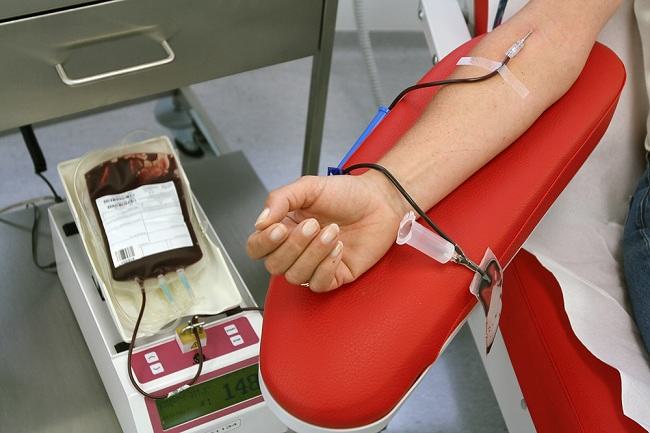Infectious eye pain not only causes discomfort, but can also inhibit activities due to impaired vision. Treatment for infectious eye pain needs to be given according to the type and cause. If not, the treatment will be ineffective, and even infectious eye pain can get worse.
Infectious eye pain is usually caused by a viral or bacterial infection. This disease can affect any part of the eye, including the cornea and conjunctiva, the membrane that lines the surface of the eyeball and the inner eyelid.

Symptoms and ways of transmission of infectious eye pain
The following are some of the symptoms of infectious eye pain that you can experience:
- Red and swollen eyes
- Eyes feel sore, itchy, and watery
- Eyes feel like grit
- Sensitive to light
- Small bumps appear on the eyelids or near the eyelashes
- Impaired vision or blurred vision
- Eyelids are painful to the touch
Transmission of infectious eye conditions can occur in several ways, including:
- Make physical contact with people with infectious eye disease or direct contact with droplets of pus or tears of sufferers
- Touching objects that are contaminated with viruses or bacteria and then touching the eyes
- Close to people with infectious eye disease
- Sharing the use of personal objects with people with infectious eye disease, such as towels, false eyelashes, cosmetics, or glasses
5 Types of Infectious Eye Pain
Infectious eye pain consists of several types, including:
1. Conjunctivitis
Conjunctivitis can be caused by various things, but the type of conjunctivitis that is contagious is only caused by an infection, either viral or bacterial. This condition can cause various symptoms, such as red, swollen, and watery eyes, as well as itching and pain.
Conjunctivitis due to a viral infection usually makes the eye discharge a lot of clear fluid. Meanwhile, if it is caused by bacteria, this condition causes the sufferer's eyes to secrete a lot of yellow or greenish fluid that is sticky and crusty.
2. Viral keratoconjunctivitis
Viral keratoconjunctivitis or epidemic keratoconjunctivitis (EKC) is a contagious eye disease that makes the cornea and conjunctiva of the eye inflamed. This eye disease is caused by an adenovirus infection.
When exposed to this highly contagious eye disease, you can experience symptoms of red and swollen eyes, watering, itching and pain, easy glare, and a grayish-white coating on the eyes.
3. Keratitis
Keratitis is inflammation of the cornea of the eye. Infectious keratitis can be caused by the herpes simplex virus or herpes zoster, bacteria, fungi, and parasites. While non-infectious keratitis can be caused by eye injuries, for example due to chemical splashes or prolonged use of contact lenses.
4. Trachoma
Trachoma is a contagious eye disease caused by a bacterial infection Chlamydia trachomatis. At first, trachoma causes mild itching and irritation of the eyes and eyelids. The eyelids will then swell and pus drain from the eye. If left untreated, trachoma can lead to blindness.
5. Endophthalmitis
Endophthalmitis is inflammation of the inside of the eye and the tissue around the eyeball. Endophthalmitis can occur after eye surgery or as a result of other conditions, such as injury to the eye and the entry of a dirty foreign object.
This infectious eye pain can make the eyes experience swelling, look red, very painful, easy to glare, and even festering.
Endophthalmitis is a dangerous infectious eye disease that needs to be treated by a doctor immediately. If not treated immediately, this disease can cause complications in the form of abscesses in the eye, meningitis, and permanent blindness.
How to treat and prevent infectious eye pain
Treatment of infectious eye pain needs to be adjusted to the cause. To find out the exact cause of the infectious eye pain you feel, you need to undergo an examination by an ophthalmologist.
To treat infectious eye pain, treatments that can be done include:
Use of drugs
To treat infectious eye pain caused by bacteria, doctors can prescribe antibiotics in the form of tablets or capsules to take, as well as ointments or eye drops.
Meanwhile, infectious eye pain caused by a virus can be treated with antiviral drugs. However, infectious eye pain due to viral infection also does not require special treatment.
To relieve eye complaints, such as pain and red eyes, doctors can give eye drops in the form of artificial tears and non-steroidal anti-inflammatory pain relievers (NSAIDs).
Self-medication at home
In addition to using medicine from a doctor, there are several home treatments that you can do to relieve symptoms of infectious eye pain, namely:
- Clean the eyelids with a wet cloth
- Compress the eyes with a cloth that has been soaked in cold water to relieve puffiness
- Compressing the eyes with a cloth soaked in warm water to relieve pain and help clear up sore eyes
- Not wearing contact lenses for a while
- Don't touch or scratch your eyes much
Eye surgery
If your symptoms don't go away with medication and home treatments, your doctor may suggest eye surgery. This treatment is usually done to treat infectious eye pain that is already severe, for example in trachoma and endophthalmitis.
Steps to Prevent Infectious Eye Pain
In order to avoid infectious eye disease, you can take the following preventive steps:
- Wash hands with soap and water for 20 seconds, especially after coming into contact with people with infectious eye disease.
- Avoid touching the face, especially the eyes, nose and mouth.
- Wipe any fluid that comes out of your eyes with a clean tissue, then immediately throw the tissue in the trash.
- Wash bed linen, pillowcases and bolsters, and towels with detergent and warm water regularly.
- Use contact lenses properly and correctly.
- Avoid sharing the use of eye drops, contact lenses, glasses, towels, and cosmetics with other people, especially people who have sore eyes.
If the infectious eye pain you experience does not go away or even gets worse, you should immediately consult an ophthalmologist for proper treatment. This is important to prevent permanent eye damage and transmission to other people.









